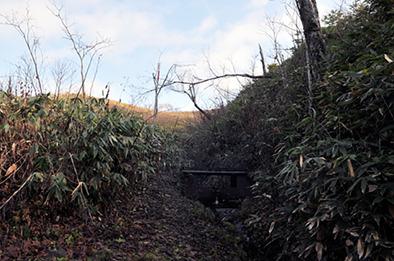当前位置:
X-MOL 学术
›
Ecol. Res.
›
论文详情
Our official English website, www.x-mol.net, welcomes your feedback! (Note: you will need to create a separate account there.)
Stream water quality in relation to watershed‐scale practical forest management in a cool‐temperate natural forest in northern Japan
Ecological Research ( IF 2 ) Pub Date : 2020-03-05 , DOI: 10.1111/1440-1703.12094 Karibu Fukuzawa 1 , Fuyuki Satoh 2 , Hideaki Shibata 2 , Tatsuya Kamiura 2 , Chikara Kozuka 3 , Toshikazu Takanishi 1 , Shintaro Hayakashi 4 , Yuya Hirano 4 , Wataru Mamiya 3 , Yuri Yabuhara 3 , Rei Sakai 3 , Hiroshi Sugiyama 5 , Hiroshi Masumoto 2 , Naoko Fukuzawa 6 , Tetsuji Takeda 3 , Hideaki Morita 3 , Makoto Yamanouchi 3 , Junko Hasegawa 3 , Toshiya Yoshida 6
Ecological Research ( IF 2 ) Pub Date : 2020-03-05 , DOI: 10.1111/1440-1703.12094 Karibu Fukuzawa 1 , Fuyuki Satoh 2 , Hideaki Shibata 2 , Tatsuya Kamiura 2 , Chikara Kozuka 3 , Toshikazu Takanishi 1 , Shintaro Hayakashi 4 , Yuya Hirano 4 , Wataru Mamiya 3 , Yuri Yabuhara 3 , Rei Sakai 3 , Hiroshi Sugiyama 5 , Hiroshi Masumoto 2 , Naoko Fukuzawa 6 , Tetsuji Takeda 3 , Hideaki Morita 3 , Makoto Yamanouchi 3 , Junko Hasegawa 3 , Toshiya Yoshida 6
Affiliation

|
The water chemistry of a stream reflects the biogeochemical processes occurring in upstream forests. Anthropogenic disturbances in forests, such as cutting trees, altering the nitrogen (N) cycle, and increase in N leaching from the soil to streams, potentially cause acidification or eutrophication downstream. In forests with dense understory vegetation, mechanical site preparation following tree cutting is commonly used to improve the early establishment of tree seedlings. In cool‐temperate forests in northern Hokkaido, Japan, dense understory vegetation (mainly comprising Sasa dwarf bamboo) inhibits forest regeneration after tree cutting. Soil scarification is a common site preparation technique for eliminating Sasa bamboo and improving forest regeneration. Long‐term data are useful for examining the temporal changes in stream water chemistry exposed to different specific forest management practices under changing environment (e.g., climate change and atmospheric N deposition). For 14 years (2003–2016), we observed the stream water chemistry in naturally forested watersheds and at one point after the confluence of all streams in Uryu Experimental Forest of Hokkaido University (North Hokkaido Experimental Forests Site of JaLTER) in northern Japan. We also monitored stream discharge, water level and stream water temperature in each watershed. Water samples were collected from the outlets of 10 watersheds. The forest management practice in each watershed includes clear‐cutting, soil scarification in sparse forest with dense understory Sasa, and clear‐cutting and soil scarification followed by soil replacement. Long‐term data in the six unmanaged watersheds are also valuable as a background information to analyze the effect of long‐term climate, environment and vegetation changes on stream water chemistry. The measured water quality data of 1,873 water samples include the ion concentrations (Cl−, NO3−, SO42−, Na+, NH4+, K+, Mg2+, and Ca2+), pH, and electrical conductivity (EC) in the stream water. The range of the concentrations of Cl−, NO3−, SO42−, Mg2+, and Ca2+ in the stream water across all the watersheds throughout the observed periods (minimum to maximum) were 3.35–23.67, 0.01–8.68, 0.83–4.01, 0.45–2.55 and 0.72–6.16 mg L−1, respectively. Similarly, the stream pH and EC ranged from 6.04 to 7.53 and 3.14 to 9.47 mS m−1, respectively.
中文翻译:

与日本北部凉爽天然林中流域规模的实际森林管理有关的溪流水质
溪流的水化学反应了上游森林中发生的生物地球化学过程。森林中的人为干扰,例如砍伐树木,改变氮(N)循环以及从土壤到溪流的氮淋溶增加,可能导致下游酸化或富营养化。在林下植被茂密的森林中,树木砍伐后的机械场地整备通常用于改善树木幼苗的早期生长。在日本北海道北部的温带森林中,茂密的林下植被(主要由Sasa矮竹构成)抑制了砍伐树木后的森林再生。土壤稀疏化是消除Sasa的常见现场准备技术竹子和改善森林再生。长期数据对于研究在不断变化的环境(例如气候变化和大气氮沉降)下暴露于不同的特定森林管理实践的溪流水化学变化是有用的。在14年(2003-2016年)中,我们观察了天然林流域中的溪流水化学现象,并且在北日本北海道大学Uryu实验森林(JaLTER北海道实验森林站点)汇合所有溪流之后的某一时刻。我们还监控了每个流域的溪流排放量,水位和溪水温度。从10个流域的出口收集水样。每个流域的森林管理实践包括在林木茂密的稀疏林中进行砍伐,土壤稀疏Sasa,进行清除和土壤疏松,然后进行土壤置换。六个不受管理的流域的长期数据对于分析长期气候,环境和植被变化对溪流水化学的影响也具有重要的背景信息。的1873水样测得的水的质量的数据包括离子浓度(CL -,NO 3 -,SO 4 2-,钠+,NH 4 +,K +,Mg的2+和Ca 2+),pH和电溪流水中的电导率(EC)。氯的浓度范围-,NO 3 - SO,在整个观测期间(最小到最大),所有流域中的流水中4 2−,Mg 2+和Ca 2+分别为3.35–23.67、0.01–8.68、0.83–4.01、0.45–2.55和0.72–6.16 mg L -1。类似地,物流的pH和EC分别在6.04至7.53和3.14至9.47mS m -1的范围内。
更新日期:2020-03-05
中文翻译:

与日本北部凉爽天然林中流域规模的实际森林管理有关的溪流水质
溪流的水化学反应了上游森林中发生的生物地球化学过程。森林中的人为干扰,例如砍伐树木,改变氮(N)循环以及从土壤到溪流的氮淋溶增加,可能导致下游酸化或富营养化。在林下植被茂密的森林中,树木砍伐后的机械场地整备通常用于改善树木幼苗的早期生长。在日本北海道北部的温带森林中,茂密的林下植被(主要由Sasa矮竹构成)抑制了砍伐树木后的森林再生。土壤稀疏化是消除Sasa的常见现场准备技术竹子和改善森林再生。长期数据对于研究在不断变化的环境(例如气候变化和大气氮沉降)下暴露于不同的特定森林管理实践的溪流水化学变化是有用的。在14年(2003-2016年)中,我们观察了天然林流域中的溪流水化学现象,并且在北日本北海道大学Uryu实验森林(JaLTER北海道实验森林站点)汇合所有溪流之后的某一时刻。我们还监控了每个流域的溪流排放量,水位和溪水温度。从10个流域的出口收集水样。每个流域的森林管理实践包括在林木茂密的稀疏林中进行砍伐,土壤稀疏Sasa,进行清除和土壤疏松,然后进行土壤置换。六个不受管理的流域的长期数据对于分析长期气候,环境和植被变化对溪流水化学的影响也具有重要的背景信息。的1873水样测得的水的质量的数据包括离子浓度(CL -,NO 3 -,SO 4 2-,钠+,NH 4 +,K +,Mg的2+和Ca 2+),pH和电溪流水中的电导率(EC)。氯的浓度范围-,NO 3 - SO,在整个观测期间(最小到最大),所有流域中的流水中4 2−,Mg 2+和Ca 2+分别为3.35–23.67、0.01–8.68、0.83–4.01、0.45–2.55和0.72–6.16 mg L -1。类似地,物流的pH和EC分别在6.04至7.53和3.14至9.47mS m -1的范围内。



























 京公网安备 11010802027423号
京公网安备 11010802027423号